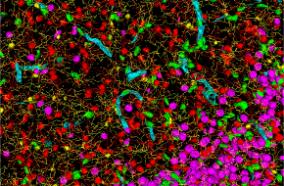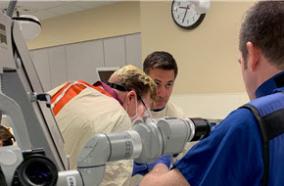Characterization of the immune microenvironment of diffuse intrinsic pontine glioma: implications for development of immunotherapy.
Characterization of the immune microenvironment of diffuse intrinsic pontine glioma: implications for development of immunotherapy.
Neuro Oncol. 2019 01 01;21(1):83-94
Authors: Lieberman NAP, DeGolier K, Kovar HM, Davis A, Hoglund V, Stevens J, Winter C, Deutsch G, Furlan SN, Vitanza NA, Leary SES, Crane CA
Abstract
Background: Diffuse intrinsic pontine glioma (DIPG) is a uniformly fatal CNS tumor diagnosed in 300 American children per year. Radiation is the only effective treatment and extends overall survival to a median of 11 months. Due to its location in the brainstem, DIPG cannot be surgically resected. Immunotherapy has the ability to target tumor cells specifically; however, little is known about the tumor microenvironment in DIPGs. We sought to characterize infiltrating immune cells and immunosuppressive factor expression in pediatric low- and high-grade gliomas and DIPG.
Methods: Tumor microarrays were stained for infiltrating immune cells. RNA was isolated from snap-frozen tumor tissue and Nanostring analysis performed. DIPG and glioblastoma cells were co-cultured with healthy donor macrophages, T cells, or natural killer (NK) cells, and flow cytometry and cytotoxicity assays performed to characterize the phenotype and function, respectively, of the immune cells.
Results: DIPG tumors do not have increased macrophage or T-cell infiltration relative to nontumor control, nor do they overexpress immunosuppressive factors such as programmed death ligand 1 and/or transforming growth factor β1. H3.3-K27M DIPG cells do not repolarize macrophages, but are not effectively targeted by activated allogeneic T cells. NK cells lysed all DIPG cultures.
Conclusions: DIPG tumors have neither a highly immunosuppressive nor inflammatory microenvironment. Therefore, major considerations for the development of immunotherapy will be the recruitment, activation, and retention of tumor-specific effector immune cells.
PMID: 30169876 [PubMed - indexed for MEDLINE]



















